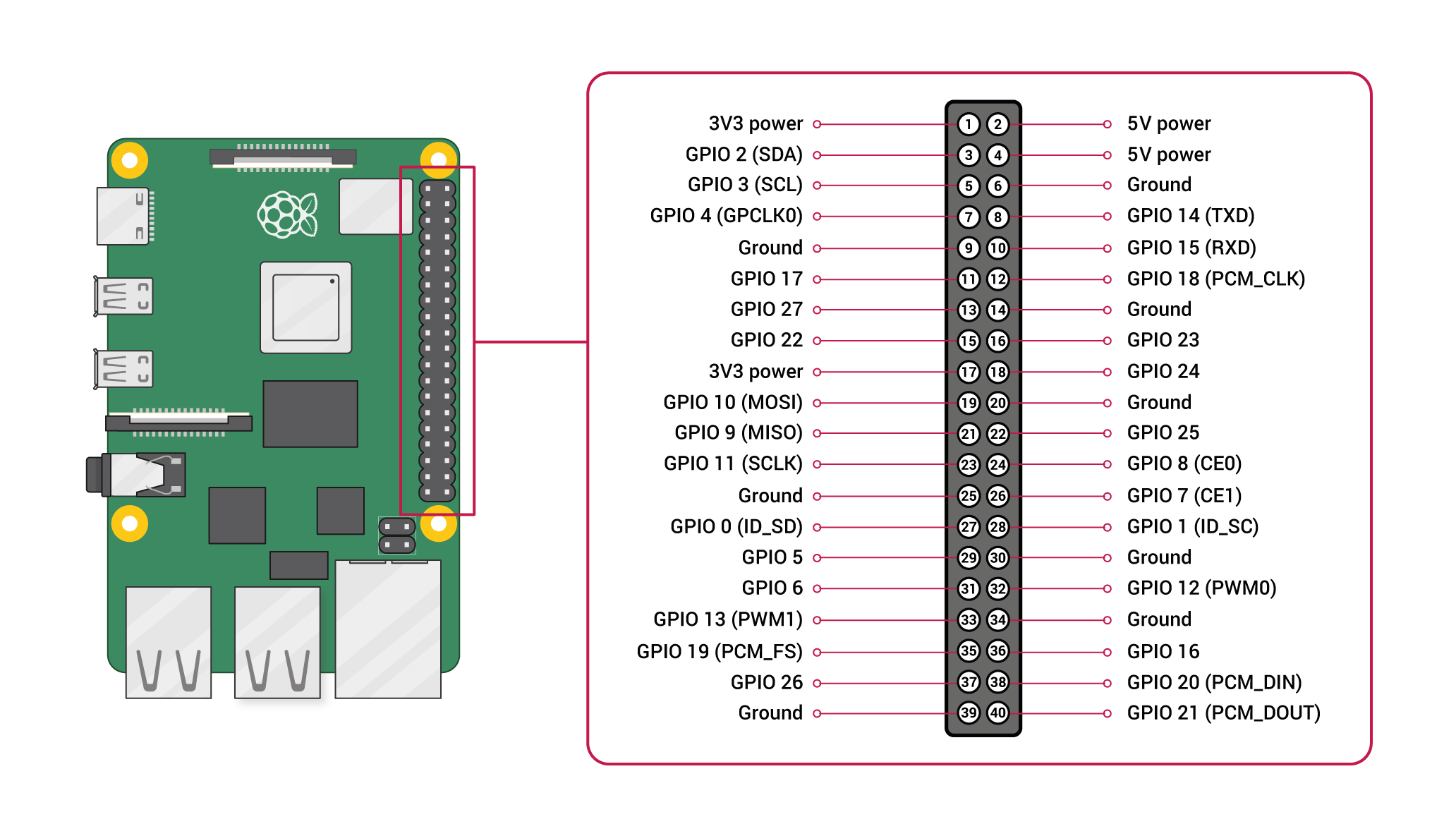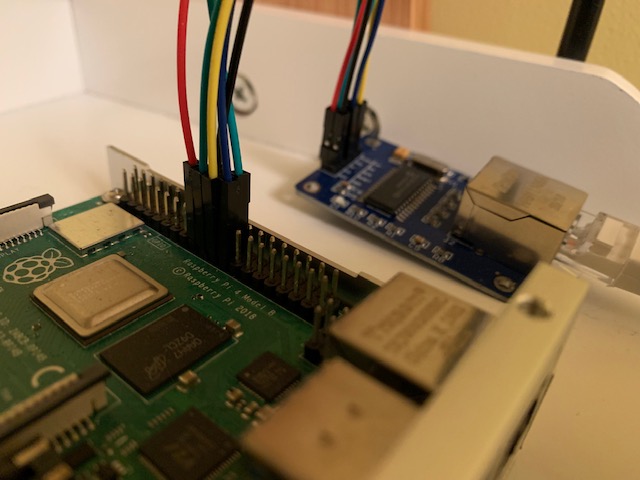6.3 KiB
Writing a "bare metal" operating system for Raspberry Pi 4 (Part 14)
Bare metal Ethernet for under £10
It's exciting to build your own OS, but until you give it the ability to communicate with the outside world, your possibilities are limited. Indeed, our simple Bluetooth comms got us up and running - but if we're to do anything meaningful then we need proper networking.
In this tutorial, we're going to connect to an external Ethernet controller (a network card, if you like) using the RPi4's Serial Peripheral Interface (SPI).
Things you'll need:
- An ENC28J60 Ethernet module - it cost me less than £6 and was worth every penny (n.b. code only tested on this exact model)
- Some female-to-female jumper cables - cost me less than £2.50
- An Ethernet cable to connect to your Internet router
Connecting up the ENC28J60 Ethernet module
I followed the very helpful instructions here to hook up the ENC28J60 to the RPi4's SPI0 interface.
We won't be connecting the interrupt line for now, so there are just six jumper leads (I've suggested colours) that need connecting:
| Pi pin | Pi GPIO | Jumper colour | ENC28J60 pin |
|---|---|---|---|
| Pin 17 | +3V3 power | Red | VCC |
| Pin 19 | GPIO10/MOSI | Green | SI |
| Pin 20 | GND | Black | GND |
| Pin 21 | GPIO09/MISO | Yellow | SO |
| Pin 23 | GPIO11/SCLK | Blue | SCK |
| Pin 24 | GPIO08/CE0 | Green | CS |
Here's a (not very useful) photo of my RPi4 connected correctly:
The SPI library
Let's start by looking at how we implement SPI communication.
I'm not going to write a long paper on how SPI works and why we need it, because it's very well documented elsewhere. It's recommended background reading, but not essential if all you want to do is get something working.
Look at lib/spi.c. It uses some of existing functions in lib/io.c that you'll remember from earlier tutorials. In fact, I've added two functions to the include/io.h header file so we can call them from our SPI library:
void gpio_setPinOutputBool(unsigned int pin_number, unsigned int onOrOff);
void gpio_initOutputPinWithPullNone(unsigned int pin_number);
Specifically, spi_init() sets GPIO 7, 9, 10, and 11 to use the ALT0 function. Cross-referencing with the BCM2711 ARM Peripherals document, page 77, you'll see that this maps SPI0 to the GPIO header. GPIO 8 is mapped as an output pin, since we'll use this to signal to the ENC28J60 that we want to talk. In fact, the spi_chip_select() function takes a true/false (boolean) parameter which either sets or clears this pin.
Looking at the SPI0 register map on page 134, we see this reflected in our REGS_SPI0 structure. This gives us handy access to the SPI0 peripheral's memory-mapped registers.
Our spi_send_recv() function then sets us up for some communcation:
- Sets the DLEN Register to the number of bytes to transfer (a length we passed into the function)
- Clears the RX & TX FIFOs
- Sets the Transfer Active (TA) flag
Then, whilst there's either data to write or data to read (and we haven't written/read more bytes than we asked for), we write to/read from the FIFO using the buffers we passed in. Once we think we're done, we wait until the SPI interface agrees i.e. the DONE flag in the CS Register is set. If there are extraneous bytes to read, we just throw them away (well, dump them to the screen for now because this shouldn't happen).
Finally, to be absolutely sure, we clear the TA flag.
I've then set up two convenient functions - spi_send() and spi_recv() - which exercise _spi_send_recv(), mainly to make future code more readable.
The ENC28J60 drivers
Let's now look into the net/ subdirectory.
Both enc28j60.c and enc28j60.h make up the driver code for the ENC28J60 Ethernet module. Whilst we could have laboured for months writing our own driver based on the module's datasheet, I chose to leverage somebody else's hard work instead. It felt like a win that I could effortlessly bring somebody else's good code into my own OS! I did, however, make sure I understood what the code was doing at every turn (optional!).
Thanks to this Github repository for saving me months of work. I made a very few changes to the code, but nothing worth documenting here. If you're keen to see how little I needed to change, clone the repo and make good use of the diff command.
What I did need to do is write some bridging code between the driver and the RPi4 hardware. Essentially, I'm talking about hooking up our SPI library to the driver - the whole reason for encspi.c.
It defines four functions that the driver requires (well documented in the enc28j60.h file):
void ENC_SPI_Select(unsigned char truefalse) {
spi_chip_select(!truefalse); // If it's true, select 0 (the ENC), if false, select 1 (i.e. deselect the ENC)
}
void ENC_SPI_SendBuf(unsigned char *master2slave, unsigned char *slave2master, unsigned short bufferSize) {
spi_chip_select(0);
spi_send_recv(master2slave, slave2master, bufferSize);
spi_chip_select(1); // De-select the ENC
}
void ENC_SPI_Send(unsigned char command) {
spi_chip_select(0);
spi_send(&command, 1);
spi_chip_select(1); // De-select the ENC
}
void ENC_SPI_SendWithoutSelection(unsigned char command) {
spi_send(&command, 1);
}
Perhaps the most confusing aspect is the chip selection. Through a bit of trial & error I discovered that when GPIO08 is clear, the device is selected, and when it's set, the device is deselected. If you can explain this to me, I'd love to hear from you - frankly, I was just pleased to get it working, so I moved on!

